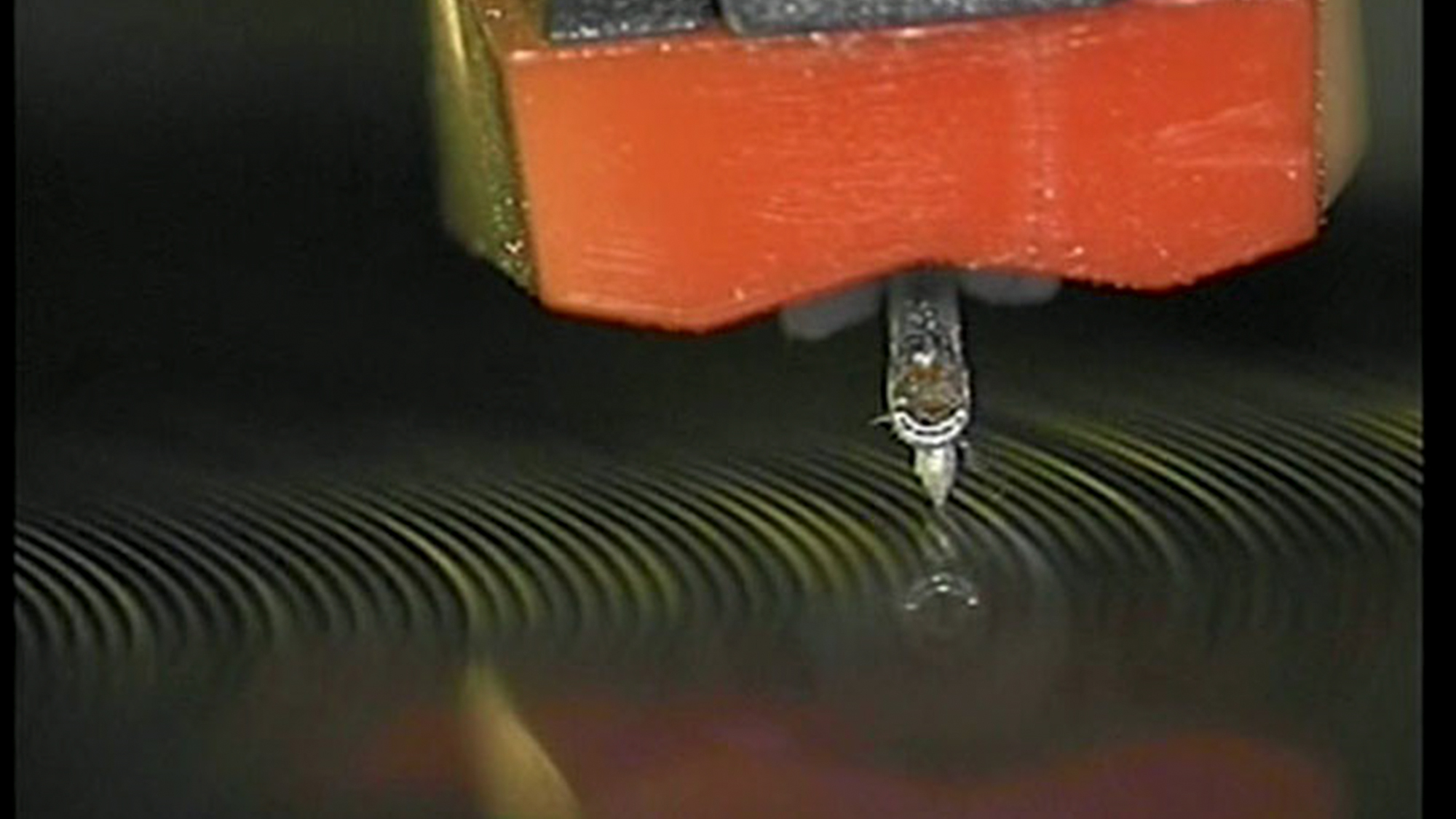
Bouquet film / video 13
Bodies and performance (Peter Liechti, Muriel Olesen, Charlemagne Palestine and Giuseppe Chiari)
La Centrale, Wednesday, November 26 to Sunday, November 30, 2025
For three months, a program of films and videos offers a journey through half a century of moving images, exploring some of the possible articulations between sound, music and image. Through a series of thematic "bouquets" or ones centered on a particular filmmaker or video artist, the program presents the work of emblematic or little-known artists, video art pioneers or film thurifers.
In a dialogue between projected works (room 1) and works on cathode-ray monitors (room 2), between formal, ethnographic and political approaches to sound, the program highlights the uses and practices of the musician's portrait, performance and soundscapes.
Each week, the films and videos disseminate discreet touches, apparitions and motifs, connections between bouquets and nods to the Biennial program: Paganini, a Sony Walkman, Jean-Luc Godard revisited by John Zorn, salt deserts, the Bachmann / Ceresole couple, brass bands and more.
A proposal by Maxime Guitton.
Hall 1
Peter Liechti, Kick That Habit
1989, 40', 16mm film transferred to video, color and black & white, stereo
Collection du Fonds d'art contemporain de la Ville de Genève (FMAC)
Kick That Habit is a documentary music film that explores the life and career of Swiss duo Andy Guhl and Norbert Möslang, known as Voice Crack. The film highlights their approach to experimental music, where they transform broken electronic devices into abstract sound instruments. Through artistic and visually original sequences, the film goes beyond classic documentary conventions to offer a poetic immersion in their obsessive quest for analog generative composition.
Peter Liechti
(1951-2014)
Resided in Zurich
Peter Liechti was a Swiss filmmaker of documentary essays and experimental films. After studying art, he co-founded the KinoK cinema before devoting himself to a body of work combining images, text and music. He collaborated with artists such as Roman Signer and Norbert Möslang, developing a singular, poetic film language. His work is introspective, on the borderline between art and cinema.
Room 2
Muriel Olesen, Basic Music (Sic)
1974, 12'35'', color, sound
Collection du Fonds d'art contemporain de la Ville de Genève (FMAC)
In this three-part video, Muriel Olesen films herself executing three distinct performances: she pulls with her teeth on elastics stretched between her fingers, forming a kind of staff, while chipping out the notes of "Frère Jacques"; she barks and yelps like a young dog, represented in image by an embroidery she animates on her sweater; she moves very quickly from laughter to inscrutability by simply passing her hand in front of her face, over and over again. This last part is the longest, seeming to last until the image itself, increasingly overexposed and shaky, is exhausted.
Muriel Olesen
(1948-2020)
Lived in Geneva
Since the early 1970s, Muriel Olesen has been one of the pioneers of video in Switzerland, notably with her partner Gérald Minkoff, who introduced her to photography. As a young artist, her work soon turned towards videotapes, installations and video performances. In 1974, however, she decided to focus on photographic series, developing her body of work through the use of large-format Polaroids. The notion of duality, the female body and an interest in painting, especially old paintings, are recurrent themes in her work.
Charlemagne Palestine, Body Music II
1974, 8'07'', video, black & white, sound
Collection LI-MA Collection
Produced by Palestine at Art/Tapes/22 in Florence, Italy, this work is a seminal performance-based exercise. Body Music II shows him wandering the labyrinthine corridors of a villa, filming with a hand-held camera. Accelerating his movements and singing into the reverberating space as if trying to escape, he creates a frenetic visual translation of his physical movements and energy.
Charlemagne Palestine
Born 1947 (USA)
Based in Brussels
Charlemagne Palestine is an American composer, musician and visual artist associated with the Minimalist movement. Trained as a pianist, organist and singer, since the 1970s he has been developing immersive music based on harmonics, resonance and repetition. Known for his ritual performances, he often uses fetish objects such as teddy bears, adding a spiritual and playful dimension to his work. His works, combining sound installations, concerts and visual art, occupy a singular place in the experimental avant-garde. Palestine has collaborated with artists such as Tony Conrad, Simone Forti and Rhys Chatham.
Giuseppe Chiari, Spoleto Concert
1972-74, 20'44'', video, black & white, sound
Collection LI-MA Amsterdam
In this video produced by Luciano Giaccari, Chiari performs an untitled composition, characteristic of his Fluxus performances of the time. His hands resting on a piano keyboard are filmed from above. They caress, constrain, pursue and seduce each other, while the piano keys sink as they pass.
Giuseppe Chiari
(1926-2007)
Lived in Florence
Giuseppe Chiari is an Italian composer, pianist and conceptual artist associated with the Fluxus movement. Trained in engineering and music, he explores the relationship between sound, gesture and language, seeking to abolish the boundaries between music and the visual arts. An active member of Fluxus since the 1960s, he has collaborated with figures such as George Maciunas and Nam June Paik. His conceptual scores and performances emphasize improvisation and audience participation. Chiari has also published influential theoretical texts and manifestos on contemporary art and music.






